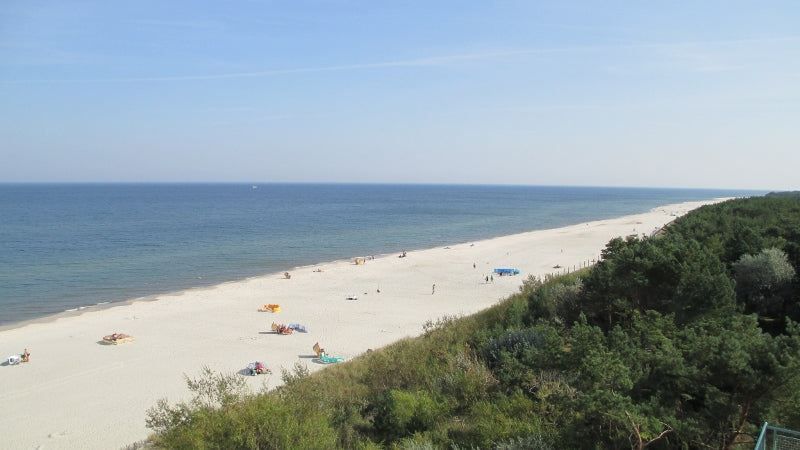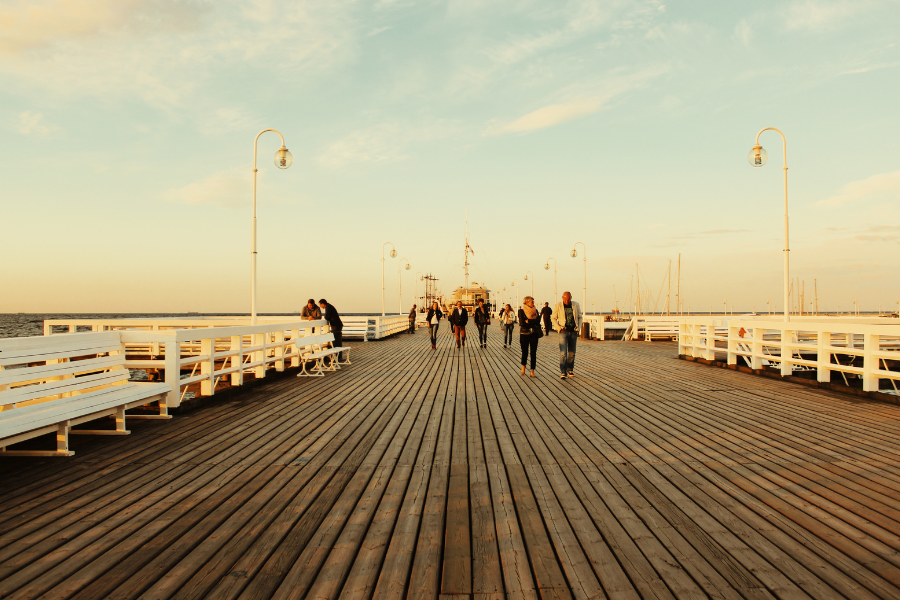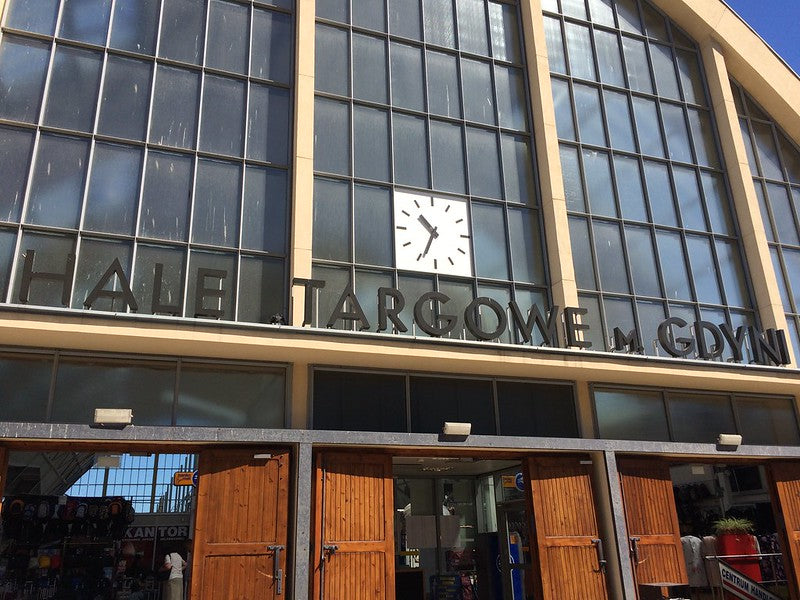A Guide to the Lower Silesia Region in Poland
The Lower Silesia region is located in southwestern Poland. It is known for its rich history, diverse landscapes, and cultural heritage. Here are some key points about the region:
1. History: Lower Silesia has a complex history, influenced by various cultures and civilizations. It has been ruled by different powers throughout the centuries, including Poland, Czech, Germany, and Austria.
2. Cities: The region is home to several important cities, including Wrocław, Lower Silesia's largest city and capital. Wrocław is known for its beautiful architecture, vibrant cultural scene, and lively market squares. Other notable towns include Jelenia Góra, Legnica, and Wałbrzych.
3. Architecture: Lower Silesia is renowned for its impressive architectural heritage. The region features numerous castles, palaces, and historic buildings, many of which showcase various architectural styles influenced by German, Polish, and Bohemian cultures. Notable landmarks include Książ Castle, Czocha Castle, and the Church of Peace in Świdnica.
4. Natural Beauty: The region boasts diverse landscapes, from the picturesque Karkonosze Mountains in the south to the scenic Odra River Valley. Lower Silesia is known for its national parks, such as Karkonosze National Park and Góry Stołowe National Park, offering hiking, skiing, and nature exploration opportunities.
5. Cultural Heritage: Lower Silesia has a rich cultural heritage, blending Polish, German, and Czech influences. The region hosts festivals, concerts, and cultural events annually, showcasing its traditional music, arts, and crafts.
6. Tourism: Lower Silesia has become an increasingly popular tourist destination, attracting visitors with its historical sites, natural landscapes, and cultural offerings. The region offers many activities, including sightseeing, outdoor adventures, and spa retreats.
In summary, the Lower Silesia Region in Poland is a historically and culturally significant area known for its diverse landscapes, impressive architecture, and vibrant cities. It offers visitors a unique blend of history, nature, and cultural experiences to explore and enjoy.
Popular Cities and Towns in the Lower Silesia Region
Lower Silesia province in southwestern Poland has several historically significant cities and towns. Among the most famous is Wrocław, the regional capital. Known for its beautiful architecture and vibrant cultural scene, Wrocław boasts a rich history that can be witnessed in its medieval Old Town, charming market square, and the iconic Gothic-style Wrocław Cathedral. Another renowned city in the region is Jelenia Góra, nestled in the picturesque Karkonosze Mountains. Famous for its stunning landscapes and numerous hiking trails, Jelenia Góra also offers historical attractions such as the Cieplice Baths, a historic spa renowned for its healing waters. These cities in Lower Silesia province provide a captivating blend of history, culture, and natural beauty.



The Capital of Lower Silesia, Wroclaw, Poland
Wroclaw is a city located in western Poland, known for its rich history and beautiful architecture. It is the fourth-largest city in the country and serves as the capital of the Lower Silesian Voivodeship.
Wroclaw's history dates back over a thousand years, and various cultures and rulers have influenced the city throughout its existence. It was part of Poland, Bohemia, Austria, Prussia, and Germany before finally becoming part of Poland again in 1945.
The city is often referred to as the "Venice of Poland" due to its numerous bridges and canals, which add to its picturesque charm. Wroclaw is home to stunning Gothic, Renaissance, and Baroque architecture, with its Old Town being a UNESCO World Heritage site. The Market Square, with its vibrant colors and impressive Town Hall, is a popular tourist attraction.
Wroclaw is also known for its academic institutions, including the University of Wroclaw, one of Central Europe's oldest universities. The city has a vibrant cultural scene, with numerous theaters, museums, and art galleries. It hosts various festivals and events throughout the year, such as the Wroclaw Good Beer Festival and the Wroclaw Film Festival.
In recent years, Wroclaw has experienced significant economic growth and development. It is home to a thriving business sector, with many international companies having offices in the city. The presence of a large student population contributes to the city's dynamic and youthful atmosphere.
Overall, Wroclaw offers a mix of historical charm, cultural richness, and modern development, making it an attractive tourist destination and a great place to live.
Jelenia Góra
Jelenia Góra is located in southwestern Poland, near the country's border with the Czech Republic and Germany. It is situated in the picturesque Karkonosze Mountains and is known for its stunning natural beauty and rich history.
The city has a population of around 80,000 residents and covers an area of approximately 109 square kilometers. Jelenia Góra has a long and fascinating history, with roots dating back to the 12th century. It has seen various rulers and influences over the centuries, including the Bohemian Kingdom, the Habsburg Monarchy, and Prussia.
One of the most prominent landmarks in Jelenia Góra is the Cieplice Śląskie-Zdrój district, which is famous for its thermal springs and spa resorts. Many tourists visit the city to enjoy the healing properties of these waters and indulge in spa treatments.
Jelenia Góra is also home to several architectural gems, including the Cistercian Abbey in Krzeszów, the Książ Castle, and the Wang Church in Karpacz. These historical sites attract visitors with their impressive architecture and cultural significance.
Nature lovers will find plenty of opportunities for outdoor activities in Jelenia Góra. The region is known for its beautiful hiking trails, such as those in the Karkonosze National Park, which offer breathtaking views of the mountains and forests. Skiing and snowboarding enthusiasts can enjoy the winter sports facilities in nearby Karpacz and Szklarska Poręba.
Jelenia Góra also hosts various cultural events and festivals throughout the year, including the Jelenia Góra Music Spring, the International Festival of Organ and Chamber Music, and the Jelenia Góra Summer of Love Festival.
Winiarze i Przyjaciele Wine Festival in Wroclaw
The annual Winemakers & Friends Wine Festival is a celebration of all things Polish and Lower Silesian wine, set in Wroclaw every September. This annual event brings together wine enthusiasts, connoisseurs, and curious newcomers to savor the finest local wines. With a growing popularity and attendance, the festival offers a unique opportunity to sample a wide variety of wines, from crisp whites to robust reds, in a relaxed and festive atmosphere. Beyond the wine tasting, attendees can indulge in delicious regional cuisine, live music, and interactive activities that showcase the artistry and craftsmanship of winemaking. Whether you're a seasoned wine aficionado or just looking for a delightful day out, the Winemakers & Friends Wine Festival promises a memorable experience for all. Raise your glass and toast to the beauty of wine and the charm of the vineyards at this wonderful event. Cheers!



Lower Silesian Wine and Beer Route
The Lower Silesia Region in Poland is known for its skills in making homemade alcoholic beverages and delicious soups. The region's temperate climate and fertile soils make it ideal for cultivating grapevines and barley, producing high-quality wines and beers.
In response to the growing popularity of ecotourism and brewery tours, the Lower Silesian Wine and Beer Route was established in 2018. This route spans over 500km and features 16 breweries and 17 wineries, offering wine and beer enthusiasts various options.
One of the main attractions of the route is the opportunity to taste locally made wines and beers in picturesque landscapes such as mountain foothills and charming towns. Visitors can enjoy a beer in front of a fireplace in a cozy wooden inn or sip wine in the courtyard of a medieval castle. The route provides a unique experience that caters to the palate and the eye.
Overall, the Lower Silesian Wine and Beer Route is a must-visit destination for those looking to explore and indulge in the region's rich wine and beer culture while also enjoying the beautiful surroundings.


Activities in The Lower Silesia Region
The Lower Silesia Region in Poland offers a variety of activities for travelers. One popular option is exploring the countryside on a bike. The region has over 250 bike routes totaling over 4,000 km in length. These routes cater to different difficulty levels, ranging from exciting trails in the Sudety Mountains to relaxing lanes between towns. The infrastructure for bike tourism is continuously expanding, with good-quality bikes available for rent. This allows visitors to enjoy the beautiful scenery, meet hospitable locals, and experience freedom without time constraints.
Horseback riding is another activity that can make holidays in the Lower Silesia Region unforgettable. Horseback riding is deeply rooted in Polish tradition and history. In Lower Silesia, many horse-riding centers and stables offer horseback riding experiences combined with sightseeing tours. The most common breeds in these centers are Polish Hucul horses and Icelandic Ponies. These breeds are known for their patience, gentleness, and bravery, making them suitable even for beginner riders. Whether you're a history enthusiast or simply looking for a unique way to explore the region, horseback riding can add an extra dimension to your trip.

Lower Silesian Spa Tours
The Lower Silesia Region in Poland offers tourists a wide range of relaxing spa tours. The region is known for its beautiful national parks, healing springs, forests teeming with wildlife, and fresh mountain air. Numerous health-resort towns and luxury spas cater to visitors throughout the year, providing treatments for the body and mind.
While it's impossible to rank all the spa resorts or mention them all in one article, Kudowa Zdroj deserves an honorable mention. Located in the northern part of the Lower Silesia Region, at the base of the Table Mountains, Kudowa Zdroj is one of the oldest spa resorts in Poland and Europe, dating back to the 15th century.
Kudowa Zdroj offers everything needed for rejuvenation, including captivating landscapes, clean air, numerous mineral water springs, and eye-catching architecture. The town has a rich cultural heritage, having been under German authority for many years and neighboring the Czech Republic. This cultural diversity is best experienced through its cuisine, with local restaurants offering Polish sour cabbage specialty, Czech potato dumplings, and German curry sausage. Visitors can enjoy a culinary vacation in just one town.
Castles & Palaces in Lower Silesia
Lower Silesia boasts a rich heritage of castles and palaces that showcase its historical and architectural significance. From the magnificent Książ Castle, one of the largest castles in Europe, to the picturesque Czocha Castle, nestled amidst forested hills, each site exudes its own charm and allure. The region also houses many stunning palaces, such as the opulent Wrocław Palace and the Baroque-style Lubiąż Abbey, providing a glimpse into past eras' grandeur. Lower Silesia offers a treasure trove of castles and palaces, inviting visitors to explore its captivating history and admire its striking beauty.
- Bolkow Castle is located in Bolkow in the Lower Silesia Region of Poland. It is a medieval castle that dates back to the 13th century. The castle has a rich history and has been through many renovations and expansions over the centuries. Today, it serves as a museum and a venue for various cultural events and festivals.
- Czocha Castle is situated near the village of Lesna and is also known as the "Pearl of Lower Silesia." It was built in the 13th century and has a unique architectural style that combines Gothic, Renaissance, and Baroque elements. The castle has been well-preserved and is open to the public. Visitors can explore its various rooms, including a chapel, a library, and a dungeon.
- Wlen Castle, located in the town of Wlen, is another impressive castle in the Lower Silesia Region. It was constructed in the 13th century and has undergone several reconstructions. Beautiful gardens surround the castle and offer stunning views of the surrounding landscape. It is currently a hotel and conference center, providing a unique experience for visitors.
- Kliczkow Palace is a magnificent palace located in the village of Kliczkow. It was built in the 17th century in the Baroque style and is surrounded by a vast park and a lake. The palace has been meticulously restored and now operates as a luxury hotel and event venue. Its elegant interiors and picturesque surroundings make it popular for weddings, conferences, and other special occasions.
- Książ Castle is one of the largest castles in Poland and is located near the city of Walbrzych. It dates back to the 13th century and has a rich history, owned by various noble families throughout the centuries. The castle's architecture blends different styles, including Gothic, Renaissance, and Baroque. A beautiful park surrounds it and offers guided tours for visitors to explore its lavish interiors and learn about its fascinating past.
Lower Silesia Mysteries
Lower Silesia, located in southwestern Poland, has a rich and complex historical background that has given rise to various mysteries and legends. Here are a few intriguing tales associated with the region:
The Lost Treasure of Lower Silesia
One of the most famous mysteries of Lower Silesia is the legend of a hidden treasure. According to the story, during World War II, as the Soviet Red Army approached, the Germans hid vast amounts of looted gold, art, and other valuables in secret underground tunnels and chambers. Many believe this treasure is still hidden somewhere in the region, waiting to be discovered. During the 2nd World War, German military forces in Lower Silesia constructed a vast network of underground tunnels and constructions known as "Riese" or "The Giant". These tunnels, hewn into solid rock, span over 8 kilometers in length and reach heights of up to 12 meters. However, the purpose of this ambitious project remains a mystery as the construction was never completed due to the war's end. The Germans made concerted efforts to destroy as many tunnels and documents as possible before escaping. Various theories have emerged regarding the purpose of the tunnels, including speculation of a military weapons assembly plant, an underground city for German superhumans, a safe headquarters for Hitler and his comrades, or even a vault to store looted valuables. The true purpose of "Riese" remains uncertain, adding to the region's historical enigma.
The Ghosts of Książ Castle
Książ Castle, located near Wałbrzych, is known for its haunting tales. Legend has it that during World War II, the Nazis used the castle as their headquarters and built a network of underground tunnels beneath it. It is said that the ghost of a White Lady wanders the halls, while some claim to have seen the apparitions of Nazi soldiers. The mystery of the hidden tunnels and the paranormal activity surrounding the castle continues to captivate locals and visitors alike.


The Rock City of Adršpach-Teplice
Just across the border in the Czech Republic, near the town of Teplice, lies the Adršpach-Teplice Rocks. This unique rock formation, consisting of towering sandstone pillars and rock labyrinths, has long been associated with legends and folklore. Tales of enchanted creatures, hidden treasures, and ancient rituals have been passed down through generations, adding an air of mystery to this stunning natural wonder.
The Underground City of Wroclaw
Beneath the city of Wroclaw, the capital of Lower Silesia, lies a network of underground tunnels and chambers. These tunnels were built over centuries and served various purposes, including as defense mechanisms during wars. Today, only a small portion of the underground city is accessible to the public, leaving much of its history and secrets hidden beneath the surface.
These are just a few examples of the mysteries and legends associated with Lower Silesia. The region's rich history, marked by various invasions, wars, and cultural influences, has left behind a legacy of intrigue that continues to captivate the imagination of locals and visitors alike.





Leave a comment